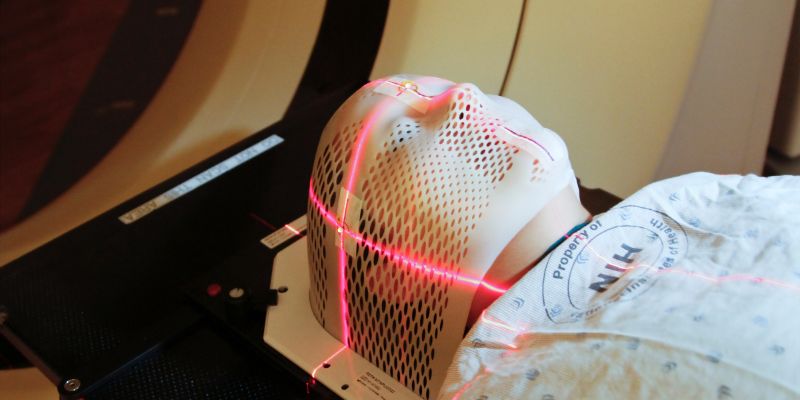It is a degenerative neurological ailment that gradually weakens one's ability to regulate their own movements. The condition, which has its roots in the brain, progressively impairs a person's motor abilities, resulting in tremors, stiffness, and balance issues. Given its growing global prevalence, understanding its origins, spotting its signs, and learning about available therapies is essential. Those affected with Parkinson's, as well as their loved ones and caretakers, and the community at large, all benefit from a thorough understanding of the disease and its treatment.
What Causes Parkinson's Symptoms and Disease?

Researchers agree that it is a complicated disorder with several causes. Prevention and proper treatment need an in-depth familiarity of its origins. The molecular processes that cause neuronal damage in the brain are a major contributor. Symptoms may develop due to the progressive degeneration of dopaminergic neurons, which are essential for motor function.
Parkinson's disease is also influenced by genetic mutations. A higher chance of developing the disorder has been associated with several gene variations, including LRRK2 and SNCA. The likelihood of contracting the illness depends on a person's genetic makeup.
There is also evidence that suggests environmental variables and exposures have a role in the onset of Parkinson's. The probable involvement of pesticides, herbicides, and industrial toxins in causing the illness has been investigated. Maintaining a healthy lifestyle and avoiding risk factors including head traumas and recurrent trauma may help reduce the likelihood of getting Parkinson's Disease. To further study and better the lives of individuals afflicted by this disorder, a thorough knowledge of these reasons is essential.
Major Symptoms

Primary Motor Symptoms
1. Tremors at rest
The presence of resting tremors in the hands, fingers, or chin, which are a distinctive feature of Parkinson's disease, might be used for diagnosing the condition. Tremors are particularly evident during periods of repose, and their intensity escalates significantly in the presence of heightened levels of worry. Engaging in routine tasks such as writing and fastening garments might prove to be very challenging within this context.
2. Muscle rigidity
The presence of muscular stiffness and tightness is a characteristic clinical manifestation often associated with Parkinson's disease. The discomfort, reduced range of motion, and muscular tenderness that ensue from this rigidity are undeniably tangible. Performing even the most basic tasks, such as rising from a seated posture or adjusting one's position in bed, might provide challenges.
3. Slowness of movement (bradykinesia)
Bradykinesia, often known as movement slowness, is a characteristic feature of Parkinson's disease. The execution of actions becomes noticeably sluggish and characterized by a meticulous approach. When things that were formerly straightforward, such as walking or tying shoelaces, transform into arduous tasks, it may significantly affect an individual's independence.
4. Impaired posture and balance
Common signs of Parkinson's disease include stooped and rigid posture. Moreover, this transition also gives rise to issues pertaining to equilibrium, hence increasing the likelihood of sustaining injuries resulting from falls. The maintenance of a steady and upright posture takes considerable effort, hence potentially impeding mobility.
Secondary Motor Symptoms
1. Reduced Facial Expression
Reduced facial expressivity, sometimes referred to as a "masked face," is recognized as a non-motor manifestation of Parkinson's disease. Individuals who exhibit restricted facial expressions of emotion may have difficulties in establishing and maintaining interpersonal connections, as well as effectively conveying their thoughts and feelings to others.
2. Low Voice Volume
Parkinson's disease is characterized by a decline in voice amplitude, leading to challenges in intelligibility. This phenomenon might potentially provide challenges in terms of self-expression and interpersonal interaction, hence resulting in experiences of social isolation.
3. Small Handwriting (Micrographia)
Micrographia, a well-documented phenomenon, refers to the characteristic of having small and cramped handwriting. This particular manifestation has been identified as a symptom often associated with Parkinson's disease. The legibility of handwriting tends to diminish as individuals age, resulting in smaller, more cramped, and more difficult to decipher script.
4. Difficulty Swallowing
Individuals diagnosed with Parkinson's disease often have dysphagia, a condition characterized by challenges in the process of swallowing. This symptom may be very exasperating for affected individuals. The likelihood of aspiration and choking is increased by the presence of this symptom, so it is advisable to make dietary and behavioral modifications in order to ensure safety.
Non-Motor Symptoms
1. Cognitive Changes
Parkinson's disease has been associated with cognitive impairments, including but not limited to memory deficits, diminished attentional capacity, and challenges in multitasking. Cognitive impairments may significantly impair an individual's ability to carry out their everyday activities and adversely affect their overall feeling of well-being.
2. Mood Disorders like Depression and Anxiety
The psychological symptoms associated with Parkinson's disease, such as mood swings, despair, anxiety, and apathy, are often attributed to chemical alterations occurring in the brain.
3. Sleep Disturbances
Sleep disruptions, such as insomnia and restless legs syndrome, are prevalent issues that may result in fatigue, daytime sleepiness, and overall deterioration of health.
4. Autonomic Dysfunction such as Constipation and Bladder Issues
The manifestation of incontinence and constipation in individuals with Parkinson's disease may be attributed to the impact of the condition on the autonomic nervous system. The non-motor symptoms have a significant influence on daily functioning.
Diagnosing the Disease
It is important to use clinical expertise to make an informed decision when it comes to diagnosis. In order to comprehend the symptoms shown by the patient and ascertain any probable hereditary predispositions, it is essential to amass a comprehensive compilation of their health history. The role of neurologists, who possess specialized expertise in the treatment of neurological disorders, is of utmost importance. A comprehensive neurological assessment is conducted, including the examination of several aspects such as reflexes, coordination, and motor function.
Parkinson's Disease Treatment
Here is a list of possible treatments for this diseases:
- Medications like Levodopa-carbidopa (Sinemet)
- Surgical interventions including Deep Brain Stimulation (DBS)
- Physical therapy
- Dietary supplements like Coenzyme Q10
- Psychotherapy
- Ongoing research explores potential breakthroughs like stem cell therapy and gene therapy
Treatment plans are highly individualized, with healthcare providers tailoring approaches to each patient's unique needs and symptom severity. Regular follow-up and adjustments to the treatment plan are crucial for managing the progressive nature of this disease effectively.
Conclusion
In order to comprehensively understand complex neurodegenerative illnesses such as Parkinson's, it is essential to possess a profound understanding of their underlying etiology, clinical presentations, and prospective treatment approaches. The identification of the exact cause of its development has proven to be challenging, despite the involvement of biological, genetic, and environmental factors. Various therapy modalities, including medication, surgical interventions, counseling, and lifestyle modifications, are used to ameliorate symptoms. Ongoing research endeavors hold the potential for promising advancements in the field of treatment.




